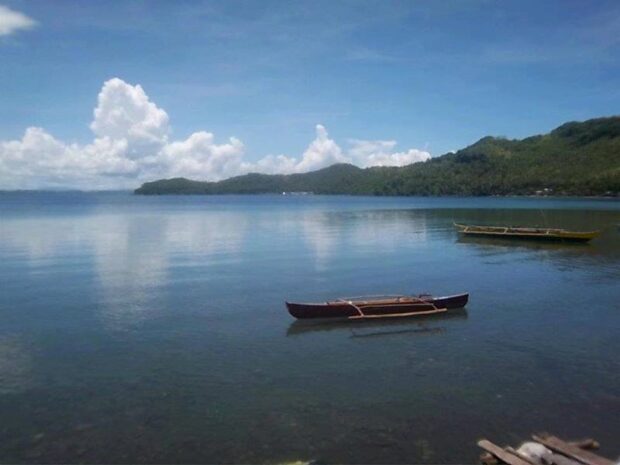
ALERT Irong-Irong Bay in Catbalogan City, in this 2021 photo, is among four bays in Samar provinces placed under red tide alert on Nov. 25, where gathering and ingesting of shellfish are prohibited. —PHOTO COURTESY OF THE BUREAU OF FISHERIES AND AQUATIC RESOURCES
TACLOBAN CITY, Leyte, Philippines — The Bureau of Fisheries Aquatic Resources (BFAR) has warned the public not to consume shrimps taken from four bays in Samar provinces where red tide toxins were detected.
The BFAR identified the affected areas as the coastal waters of Guiuan, Eastern Samar; Cambatutay Bay in Samar, particularly in the town of Tarangnan; Irong-Irong Bay in Catbalogan City, Samar; and Matarinao Bay in Eastern Samar in the municipalities of General MacArthur, Quinapondan, Hernani and Salcedo.
“Seawater samples collected from these bays and coastal waters are positive of Pyrodinium bahamense, a toxic microorganism that causes paralytic shellfish poisoning (PSP),” BFAR said in a Nov. 25 advisory.
The agency advised the public to refrain from gathering, selling, and eating all types of shellfish from these areas. However, fish, squid, shrimps and crabs sourced from the identified coastal waters and bays were safe for human consumption provided they were fresh and washed thoroughly, and their internal organs, such as gills and intestines, were removed before cooking, the BFAR said.
Bays and coastal waters in other parts of the Eastern Visayas region are free from the red tide toxin, according to the agency.
Be vigilant
Red tide is a term used to describe a phenomenon where the water gets discolored by high algal biomass or the concentration of algae. It happens when there is an overgrowth of algae, which causes the color of water to turn to red, green or brown. Some of these algae produce toxic chemicals, contaminating the shellfish that consume them.
The BFAR asked local governments to exercise extra vigilance against the gathering, trading, and consumption of shellfish to prevent the incidence of PSP, which can occur minutes after ingesting bivalve shellfish, such as mussels, oysters and clams that contain red tide toxins.
Consuming toxic shellfish can lead to paralytic shellfish poisoning, which affects the nervous system within 30 minutes after consumption. Symptoms include tingling of the lips and tongue that can spread to the face, neck, fingertips and toes. It will also lead to headache, dizziness and nausea, among others.